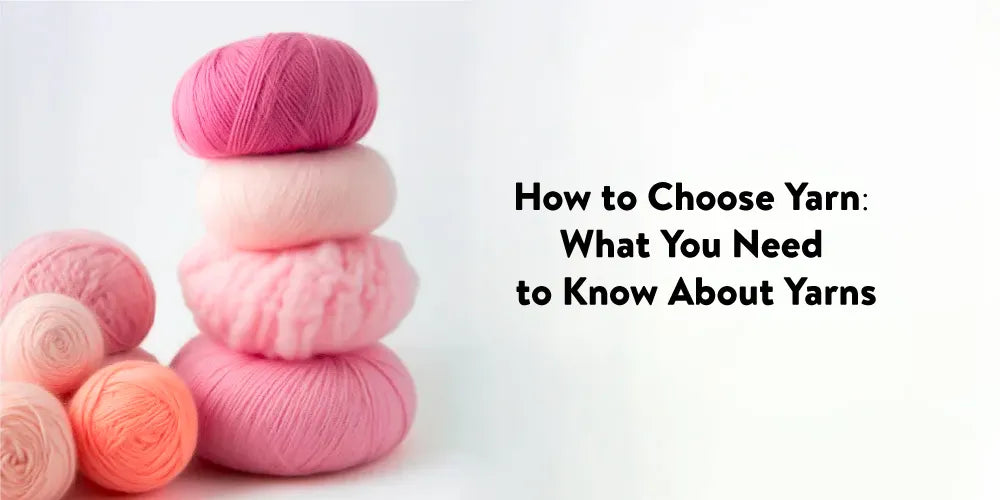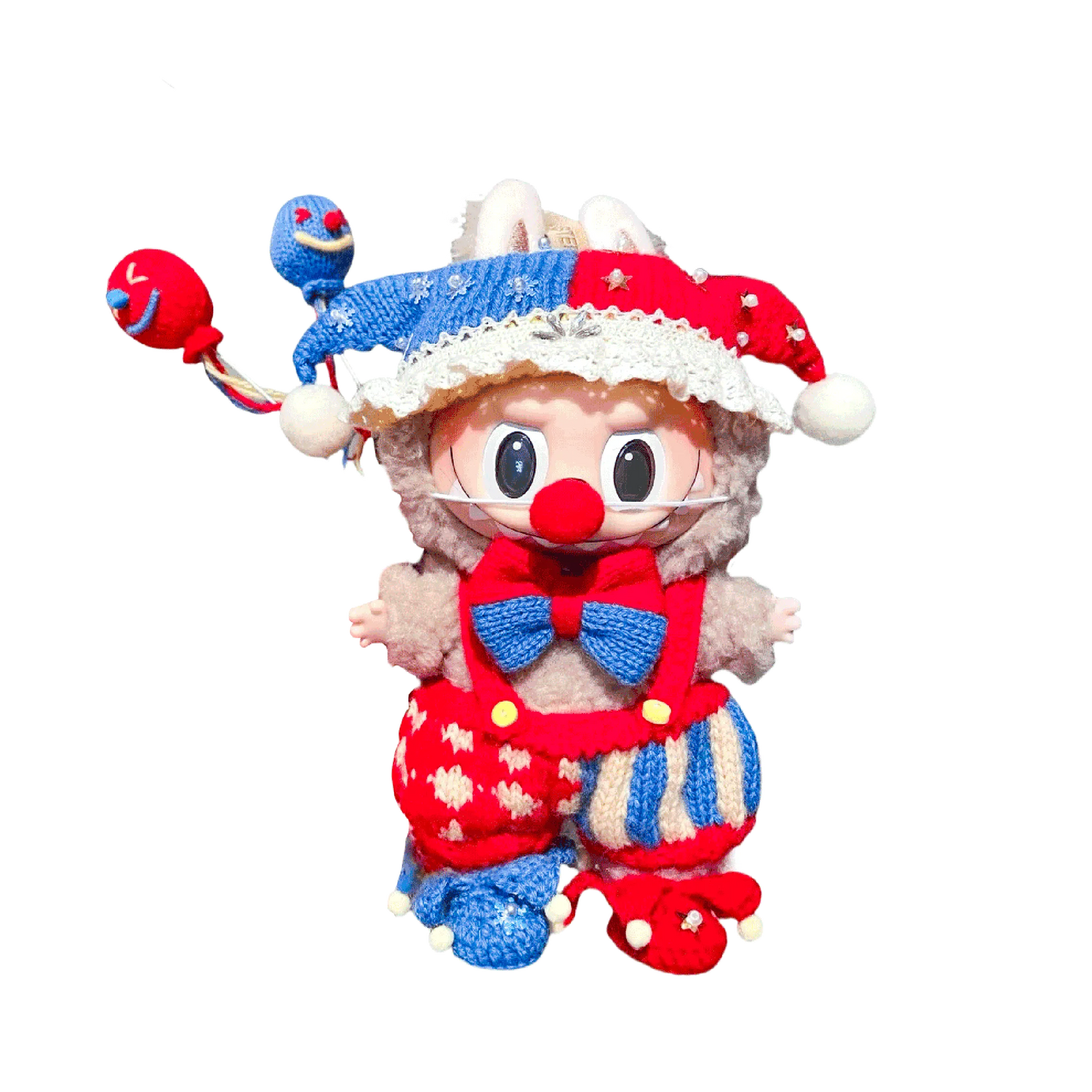
How to Choose Yarn: What You Need to Know About Yarns
Share
Yarn isn’t just a material—it’s the lifeblood of every crochet creation. Choosing the right yarn isn’t just helpful—it’s half the craft. For beginner crocheters, understanding the nuances of yarn can be the key to unlocking smoother stitches and more successful projects. In this guide, we’ll walk you through the essentials.
Quick Reference Catalog
- Yarn Fibers
- Natural
- Synthetic
- Blended
- Yarn Weight
- Yarn Ply Explained
- CYC Yarn Weight System
- What is WPI
- Decoding Yarn Labels
- Beginner Yarn Selection Tips
Yarn Fibers: The Foundation of Every Skein
All yarns are not created equal. The fiber content directly affects how your finished project feels, wears, and behaves. Fibers fall into three broad categories: natural, synthetic, and blended.
Natural Fibers include:
- Animal-based: alpaca, cashmere, Merino wool, mohair, silk, and llama.
- Plant-based: bamboo, cotton, linen, beechwood.
Synthetic Fibers: acrylic, nylon, polyester.
Blended Fibers combine two or more types to balance benefits—like mixing nylon with wool for durable sock yarn.
Here’s a quick comparison:
| Yarn Type | Advantages | Disadvantages |
|---|---|---|
| Wool | Warm, elastic, breathable | Can irritate skin, care-intensive |
| Merino | Soft, allergy-friendly | Prone to pilling |
| Alpaca | Extra warm, hypoallergenic | Costly, low elasticity |
| Cashmere | Luxurious, featherlight | High price tag |
| Mohair | Glossy, springy, plush | Static-prone, clings |
| Silk | Lustrous, summer-ready | Slippery, tricky for beginners |
| Cotton | Soft, absorbent | Lacks stretch |
| Bamboo | Antibacterial, eco-conscious | Needs delicate care |
| Linen | Tough, breathable | Wrinkles, wears quickly |
| Acrylic | Budget-friendly | Prone to pilling |
| Nylon | Strengthens blends | Low breathability |
Also worth noting are specialty yarns: chenille, eyelash, terry, faux fur—each adding texture or novelty to a project.
Understanding Yarn Weight
Yarn weight refers not to its heaviness, but its thickness. It’s vital to match the weight to your project.
While some regions define weight by ply, others—like the U.S.—use the CYC Standard Yarn Weight System, ranging from 0 (Lace) to 7 (Jumbo).
You might also see WPI (Wraps Per Inch) used to estimate yarn thickness—especially when labels are missing. Wrap the yarn gently around a pencil for one inch and count the loops: more wraps = thinner yarn.
CYC Yarn Weight Categories Overview:
| Weight | Yarn Type | Ply | WPI | Hook Size | Use |
|---|---|---|---|---|---|
| 0 | Lace | 1-3 | 30–40+ | 1.5–2.25mm | Shawls, delicate wearables |
| 1 | Super Fine | 4 | 14–30 | 2.25–3.5mm | Socks, baby items |
| 2 | Fine | 5 | 12–18 | 3.5–4.5mm | Babywear, accessories |
| 3 | Light | 8 | 11–15 | 4.5–5.5mm | Mittens, sweaters |
| 4 | Medium | 10 | 9–12 | 5.5–6.5mm | Garments, blankets |
| 5 | Bulky | 12 | 6–9 | 6.5–9mm | Baskets, chunky scarves |
| 6 | Super Bulky | 14 | 5–6 | 9–15mm | Cozy throws, rugs |
| 7 | Jumbo | 16+ | 1–4 | 15mm+ | Giant blankets, wall art |
How to Read a Yarn Label
A yarn label is a goldmine of information. Here's how to interpret it:
- Weight Category – Follows the CYC system
- Fiber Content – Tells you what it’s made of
- Weight – Physical weight in grams or ounces
- Yardage – Essential for calculating how much to buy
- Needle/Hook Size & Gauge – Helps match project dimensions
- Care Instructions – Washing, drying, and storage guidelines
- Color Name & Dye Lot – Ensure consistent color when buying multiples
Always keep your labels or snap a photo—they’re your reference if you need to buy more or substitute yarns later.
How to Choose Yarn for Beginners
Step 1: Pick Your Project
Define your goal—scarf, coaster, hat? Your yarn should suit the final item’s function.
Step 2: Choose the Material
Think about qualities like warmth, softness, absorbency, or shine. Cotton for dishcloths, mohair for scarves. Always check for allergies if gifting.
Step 3: Consider the Weight
Avoid extremes. Super fine yarns are fiddly; super bulky ones are unwieldy. Category 4 (Medium) yarn is ideal for beginners.
Step 4: Opt for Easy Colors
Light, solid hues make it easier to see stitches. Avoid multicolored or textured yarns at the start. Ensure all skeins come from the same dye lot to avoid color mismatch.
For an effortless entry into crochet, consider a beginner kit with matching yarn, tools, and a pattern.
In Conclusion
Yarn may seem simple, but there's a universe of detail beneath each strand. As a novice, taking time to understand fiber, weight, and label information will elevate your crochet game from frustrating to fabulous.
📸 Suggested Images for the Article
-
Image of common yarn types with labels
Caption: Overview of natural, synthetic, and blended yarns. -
Side-by-side photo of yarn weights from 0–7
Caption: Visual guide to the CYC Yarn Weight System. -
Close-up photo of a yarn label
Caption: Key elements of a yarn label you should know. -
Table image showing WPI measurement using a pencil
Caption: How to measure WPI to determine yarn weight. -
Project examples by yarn weight (e.g., lace shawl vs chunky blanket)
Caption: Choosing the right yarn weight for your project.

